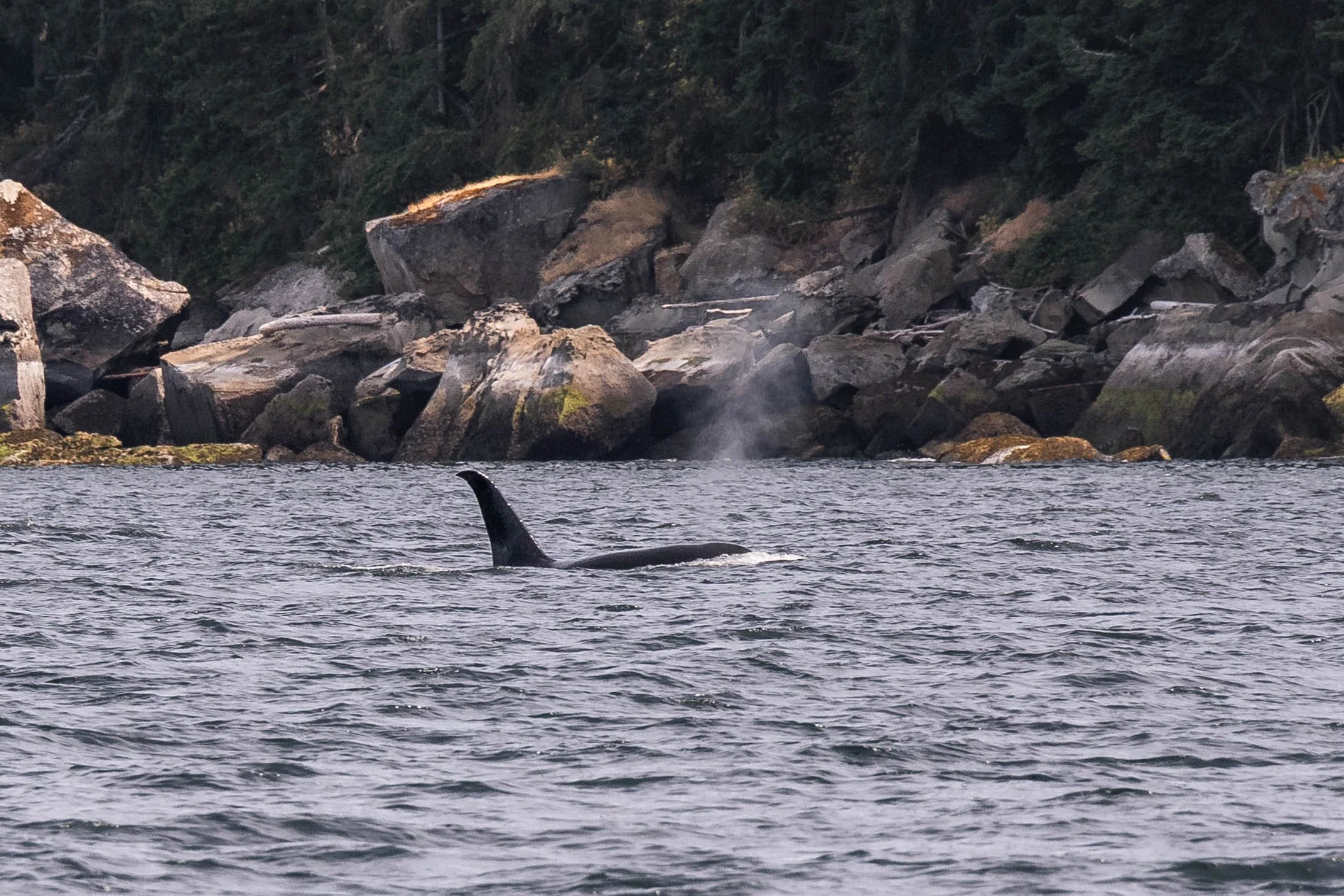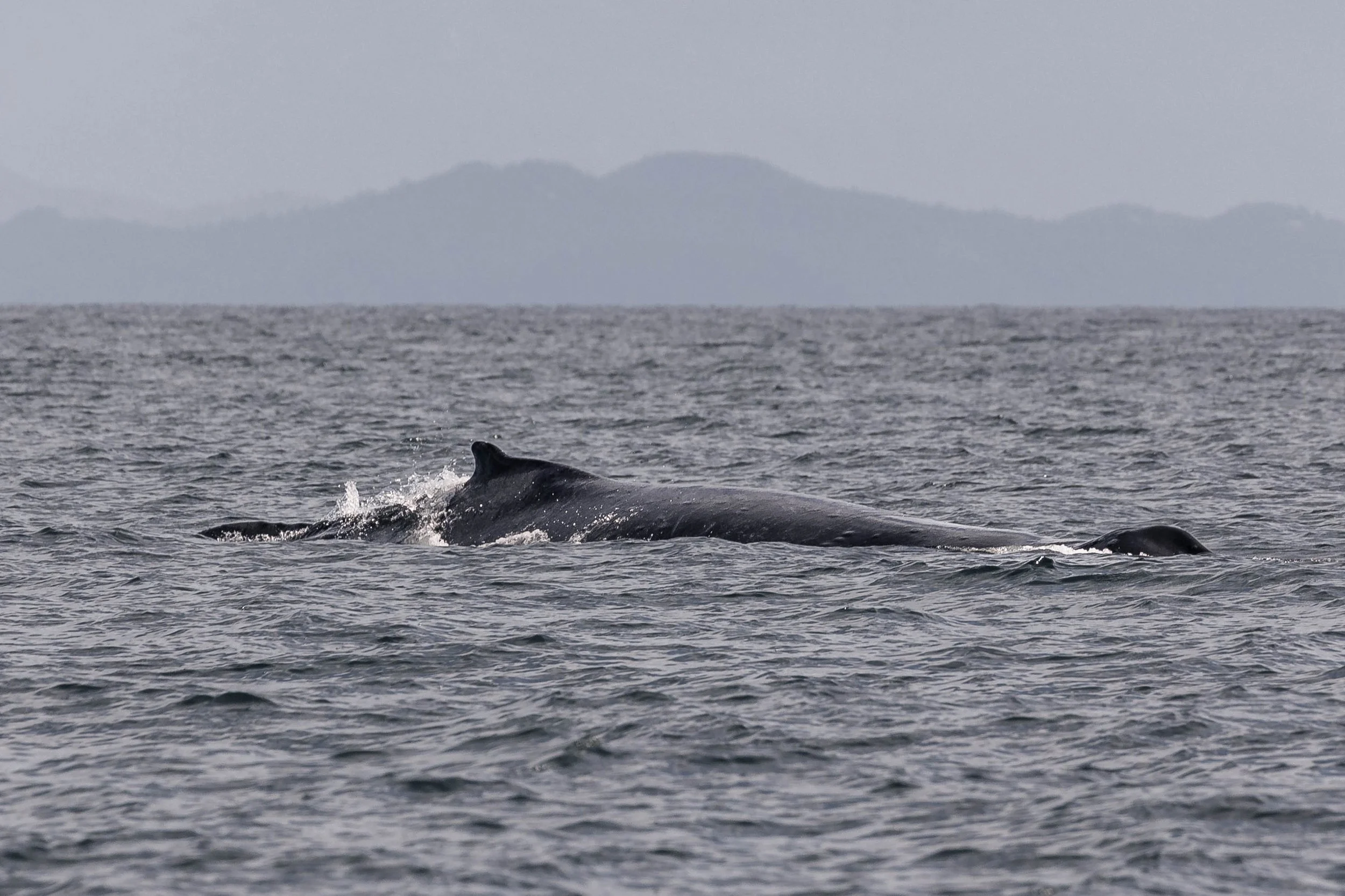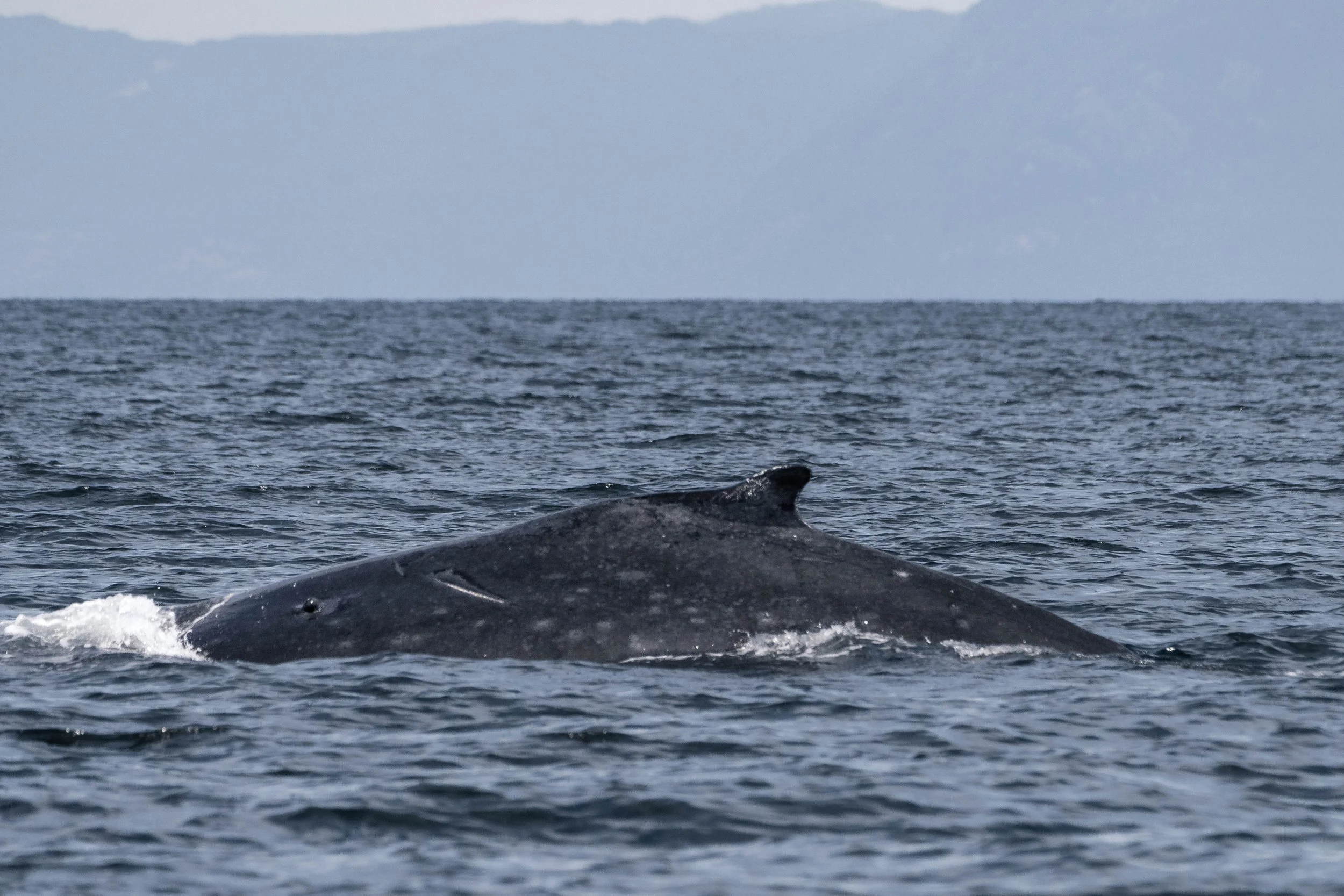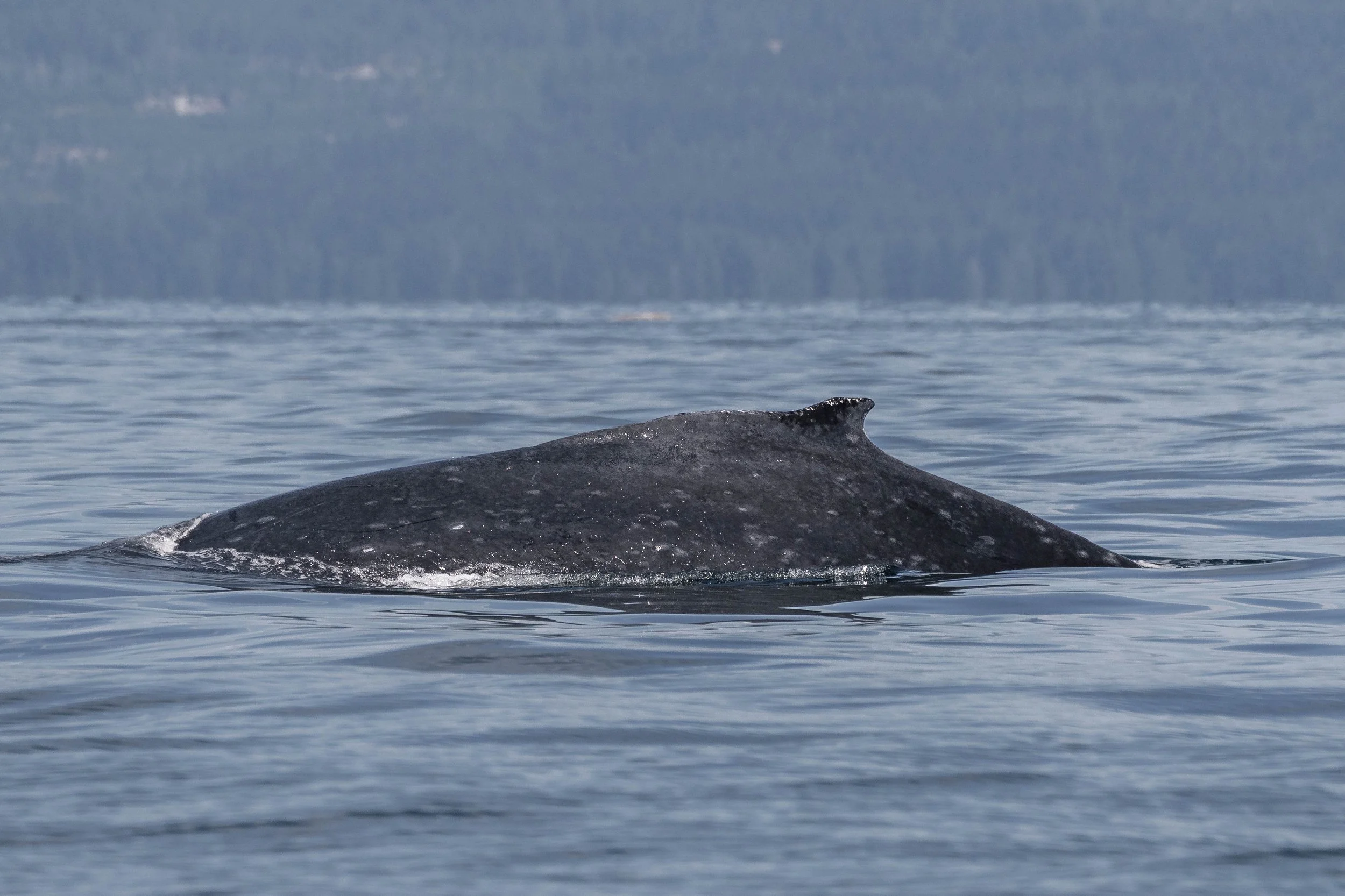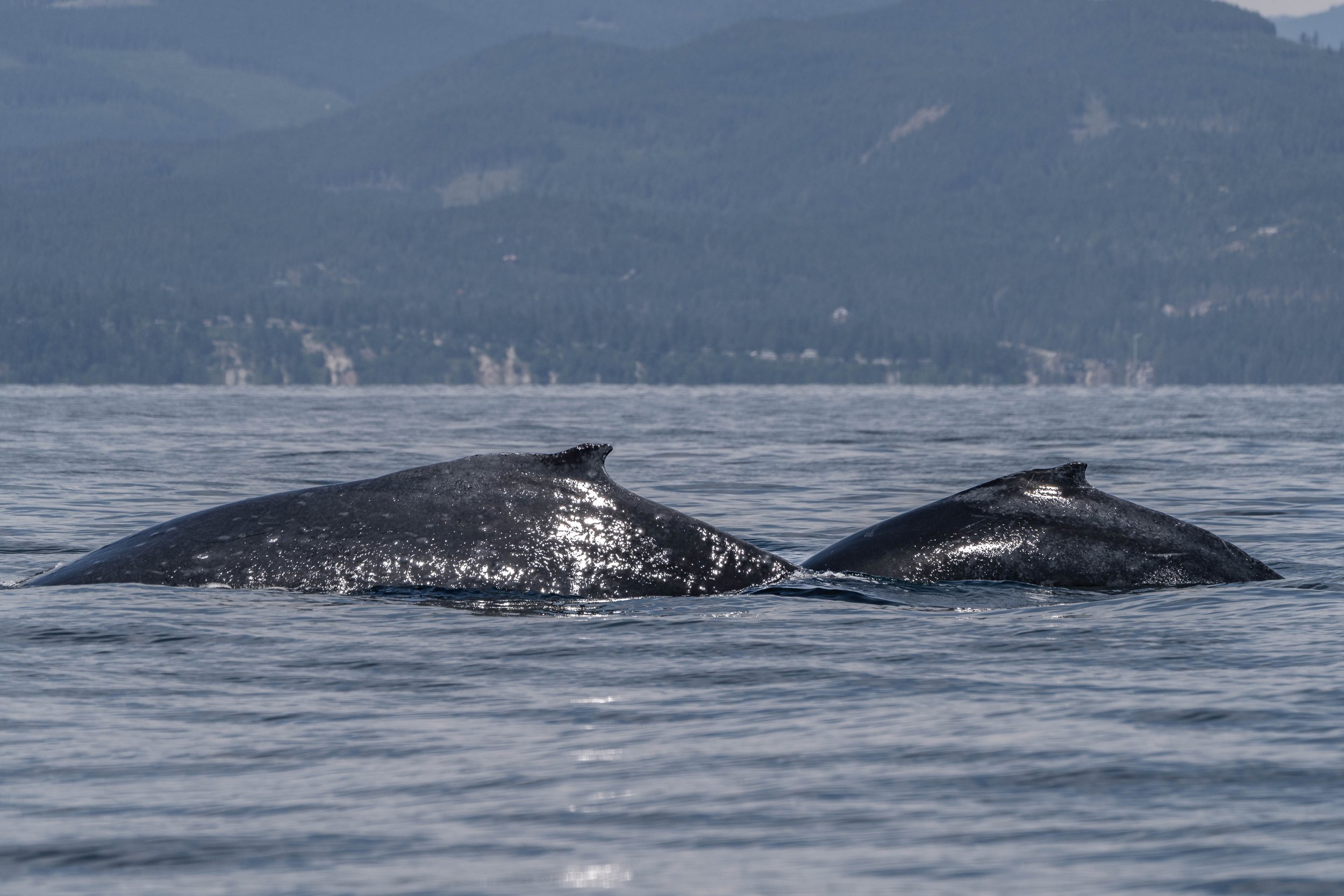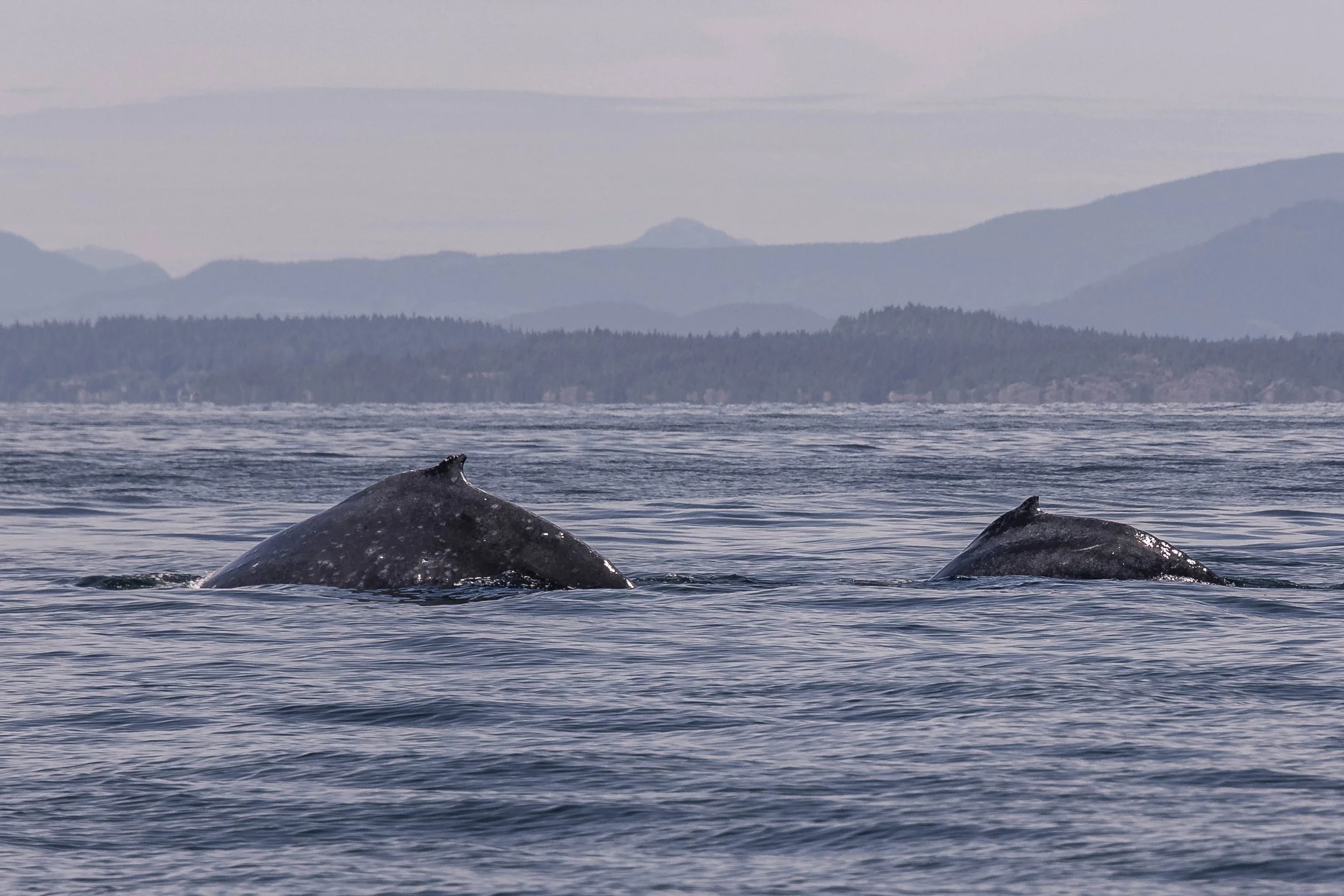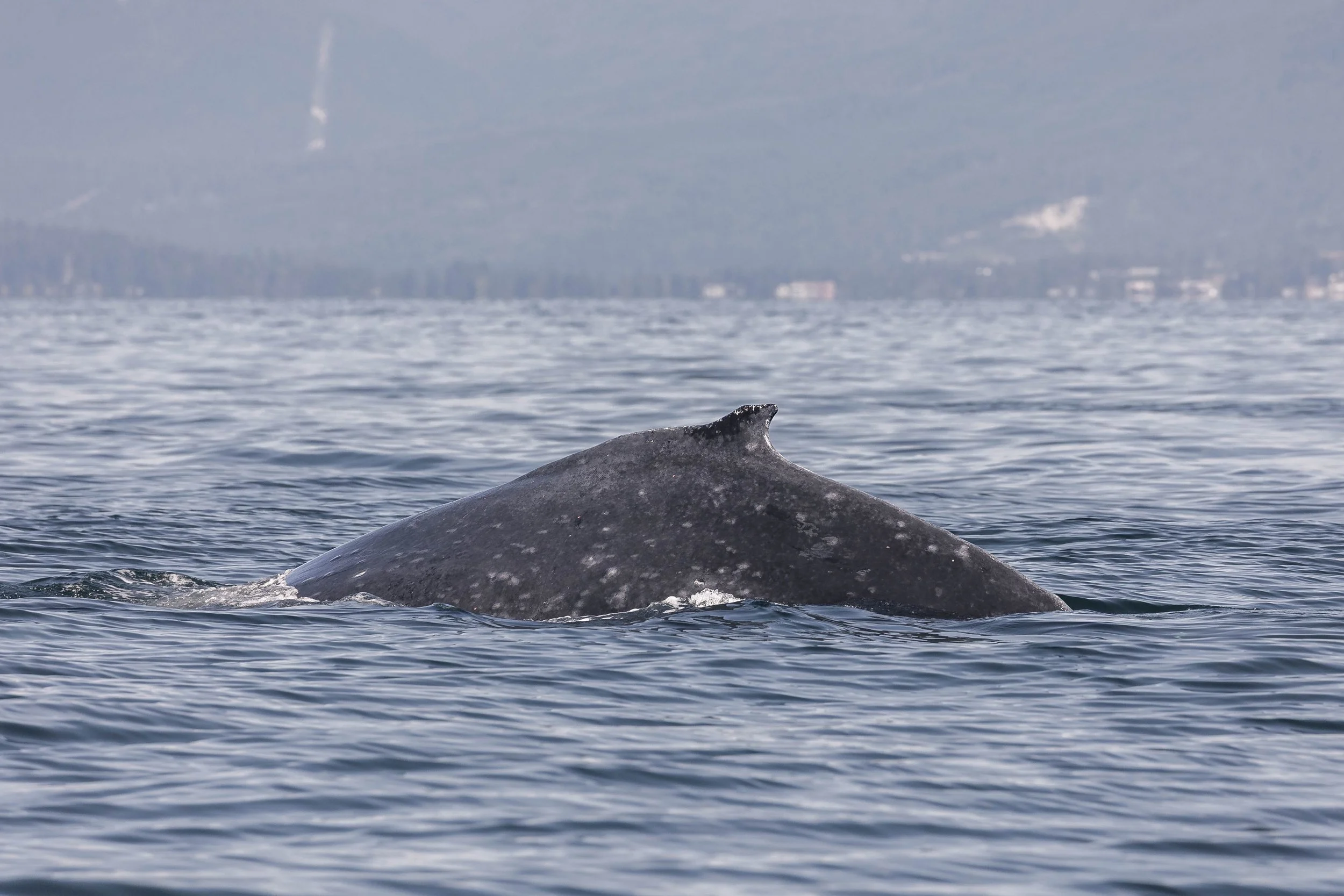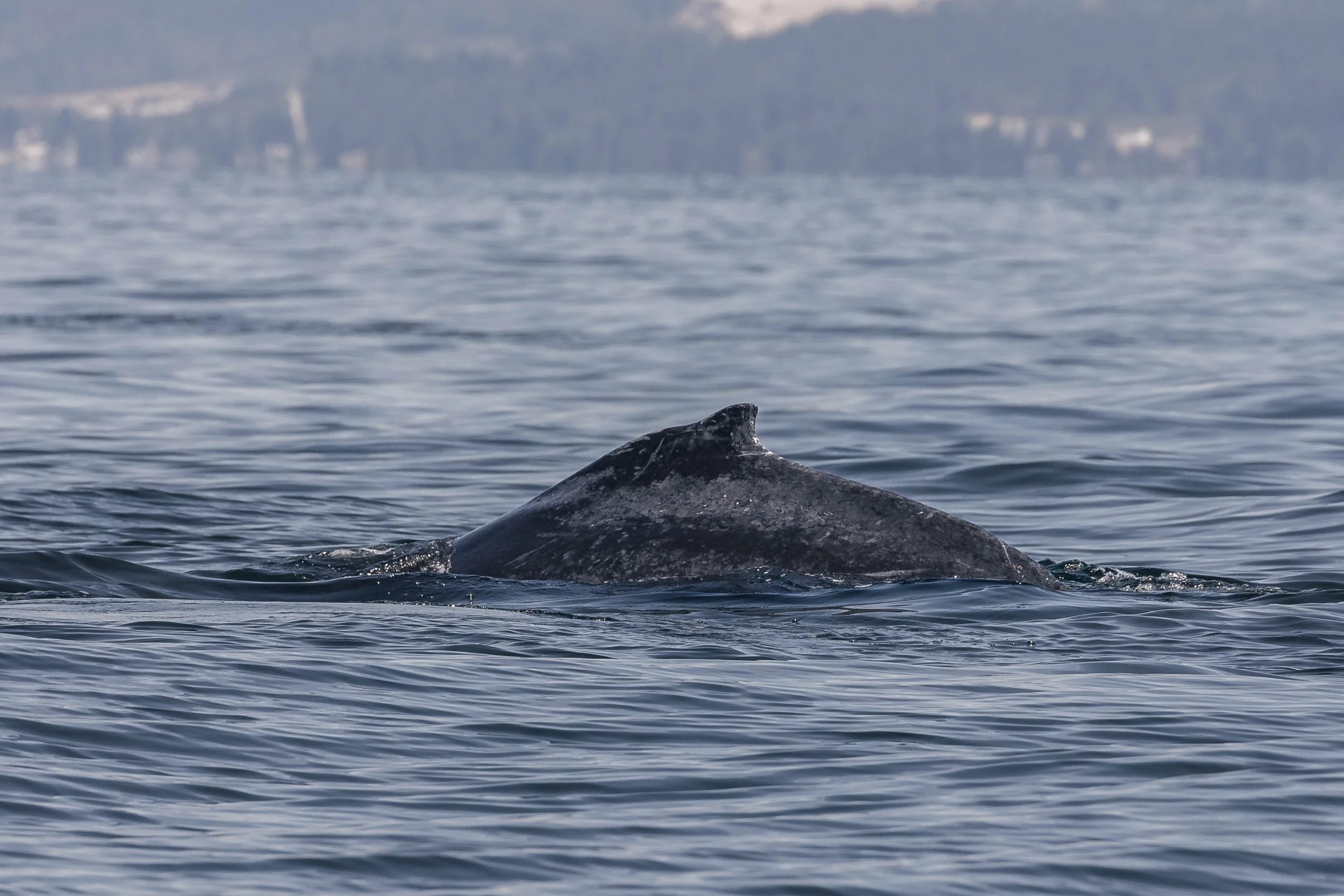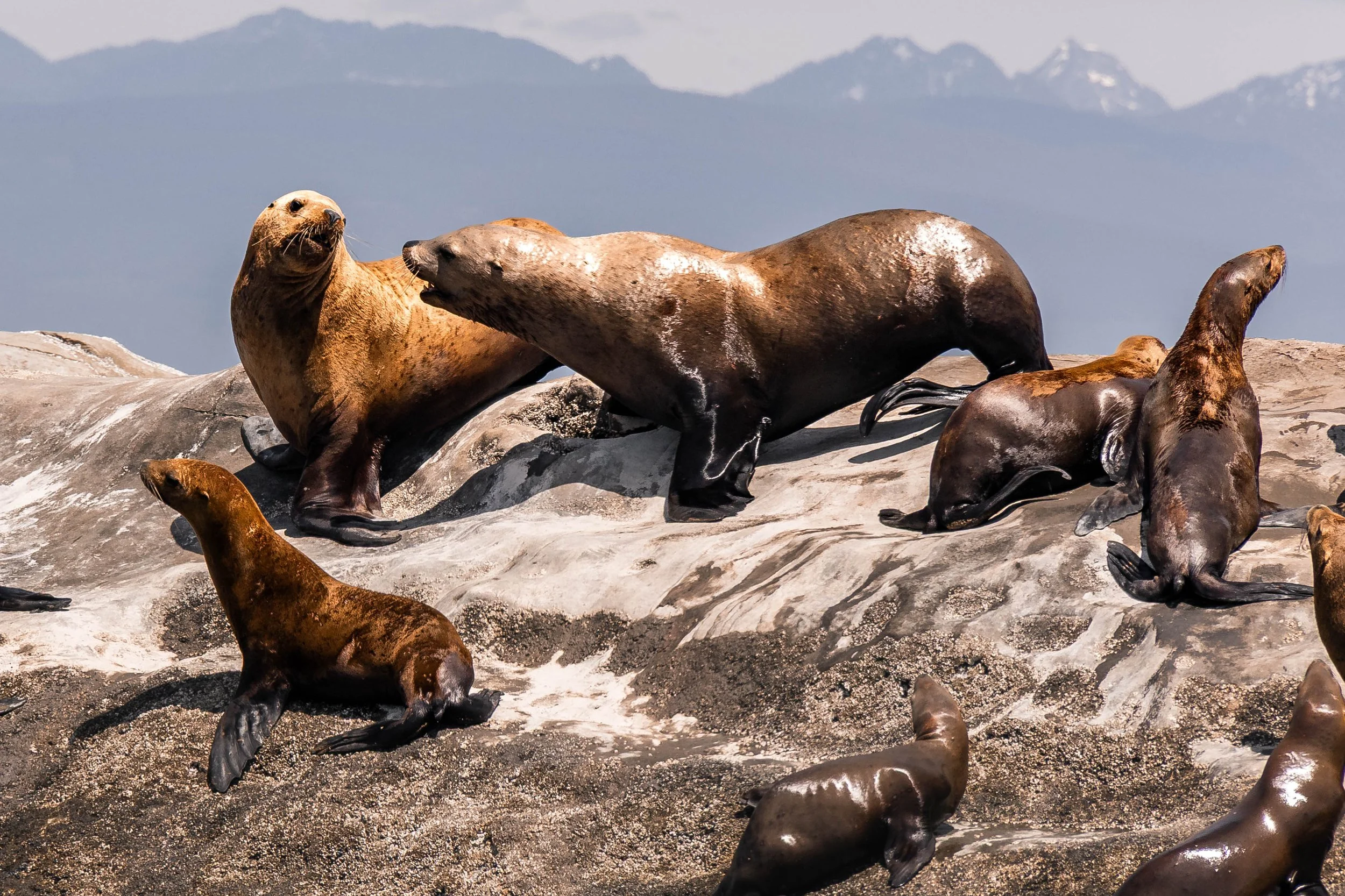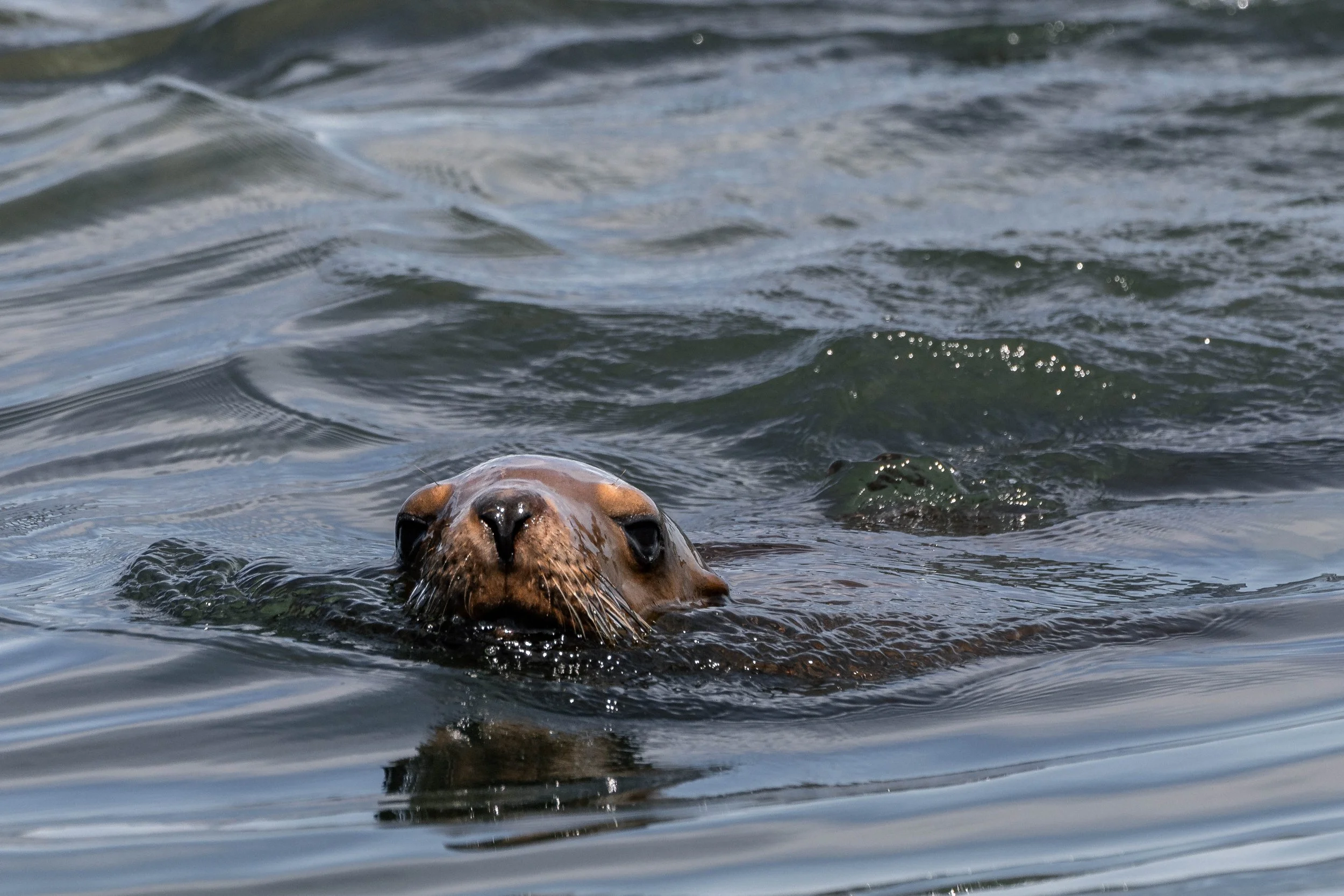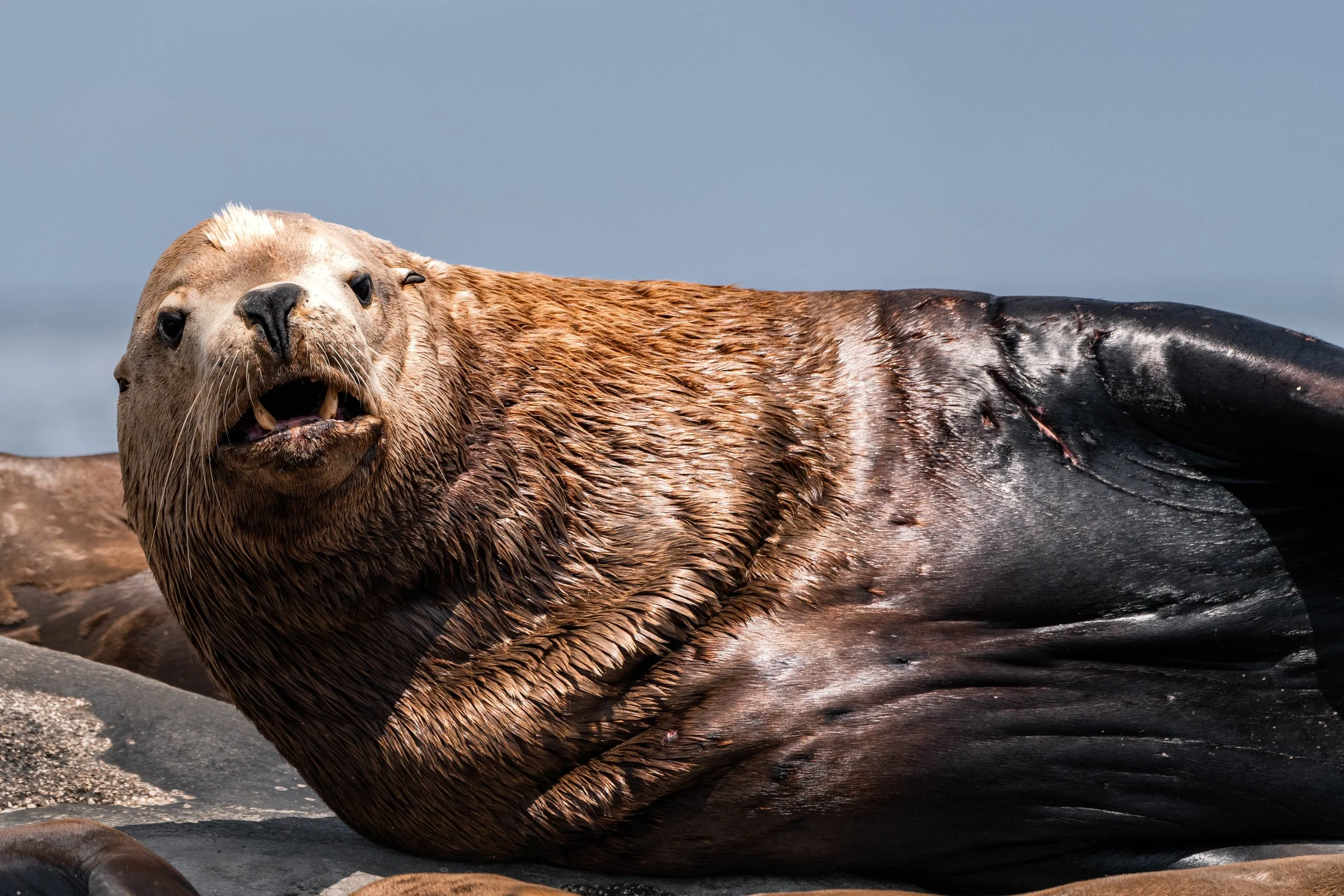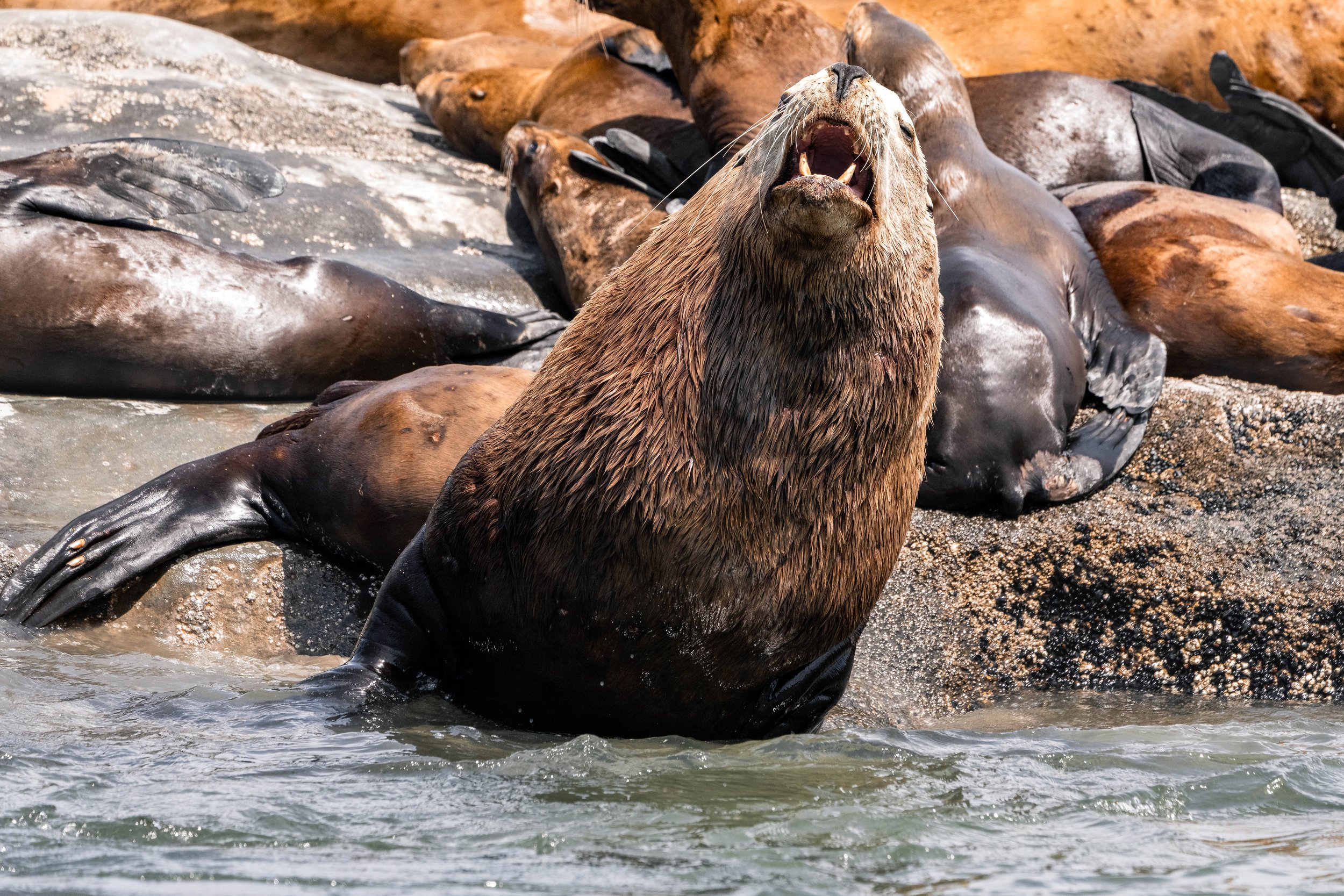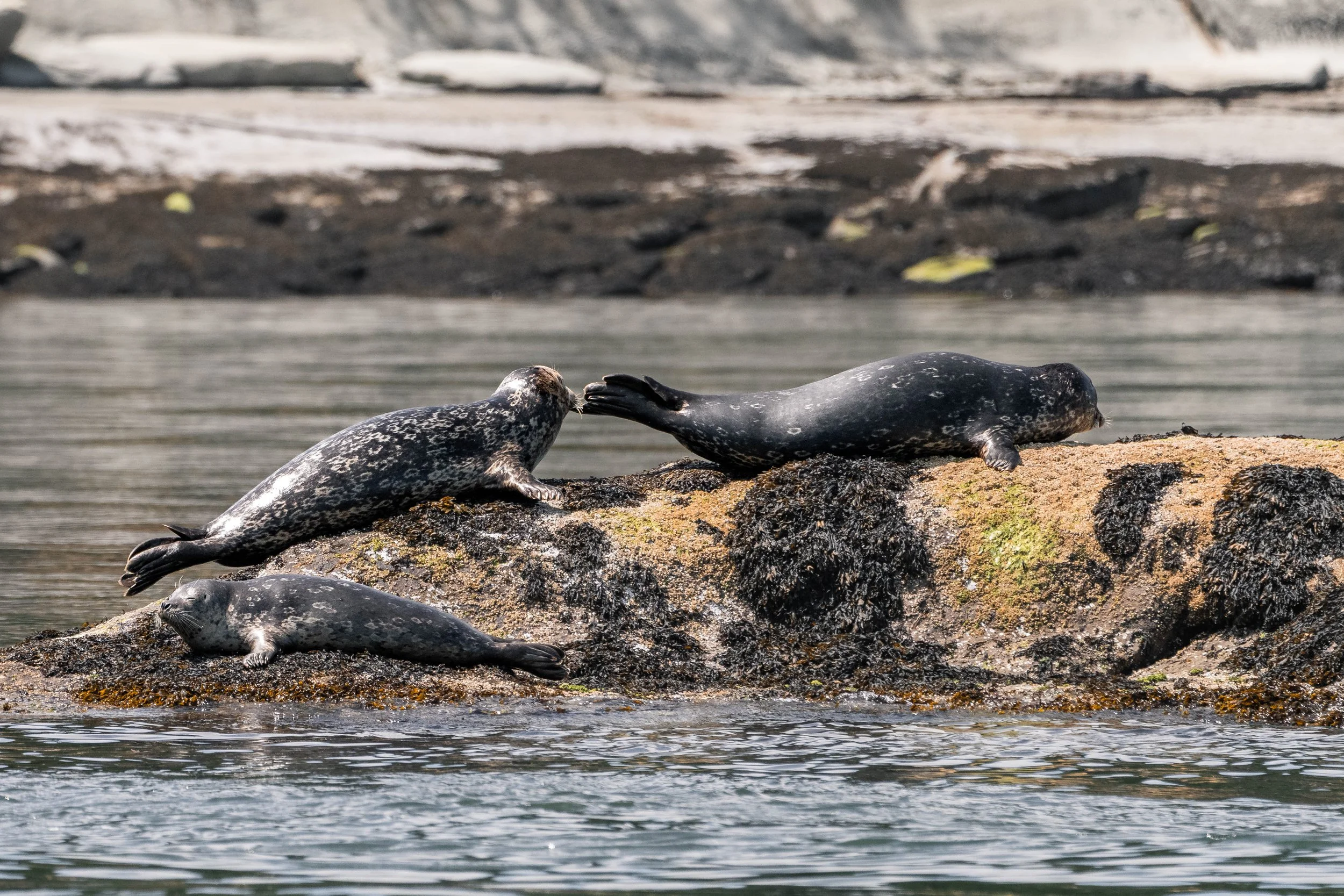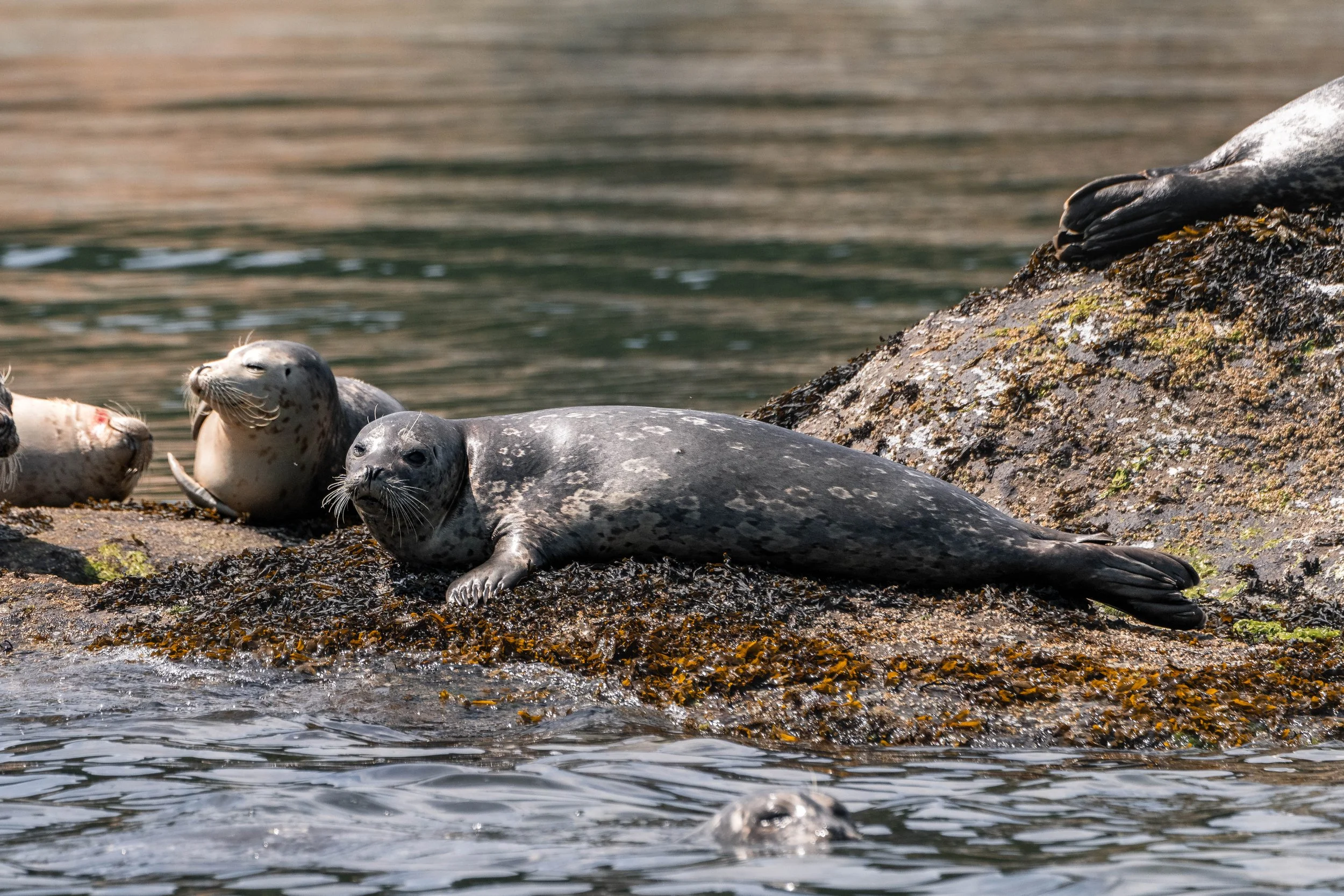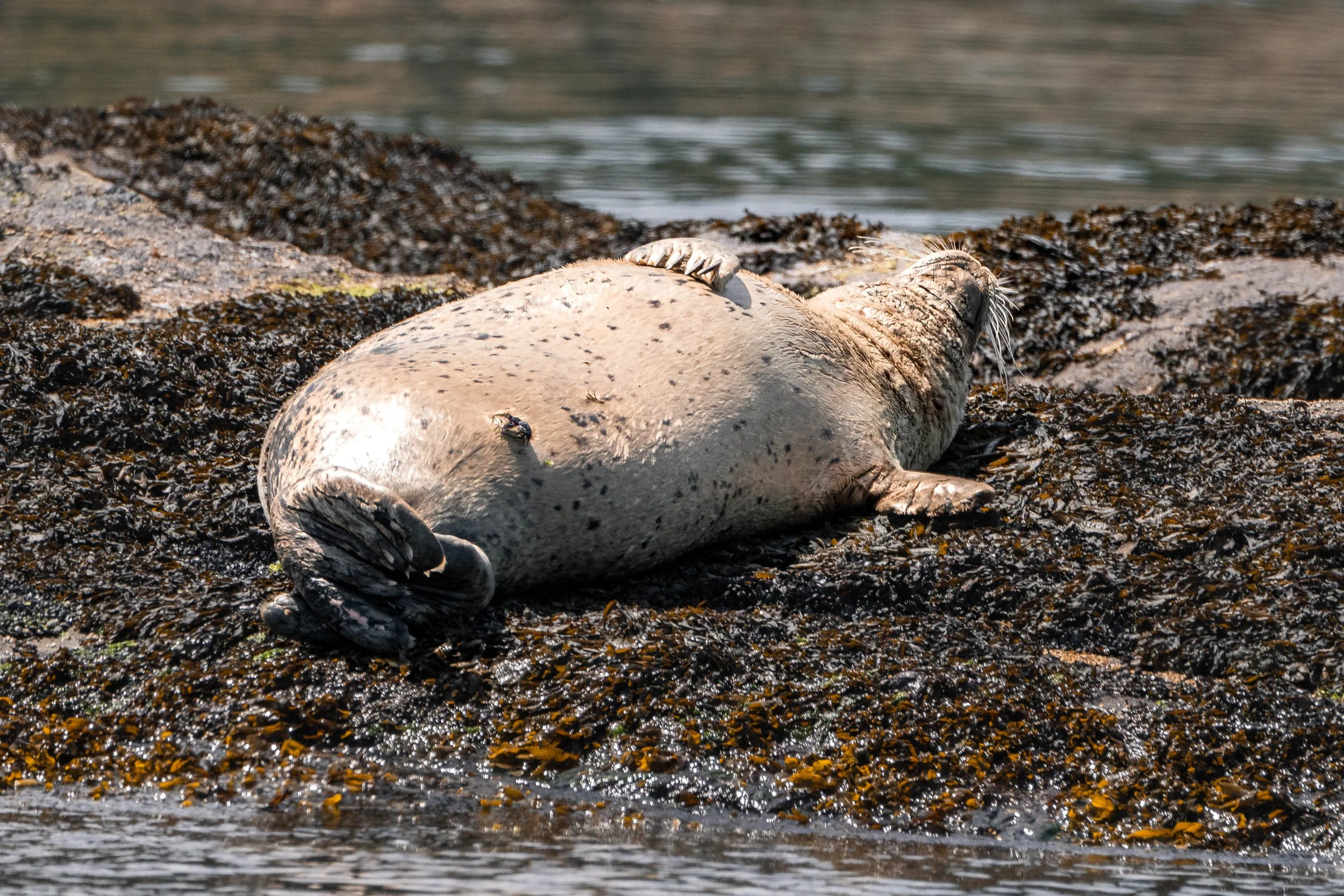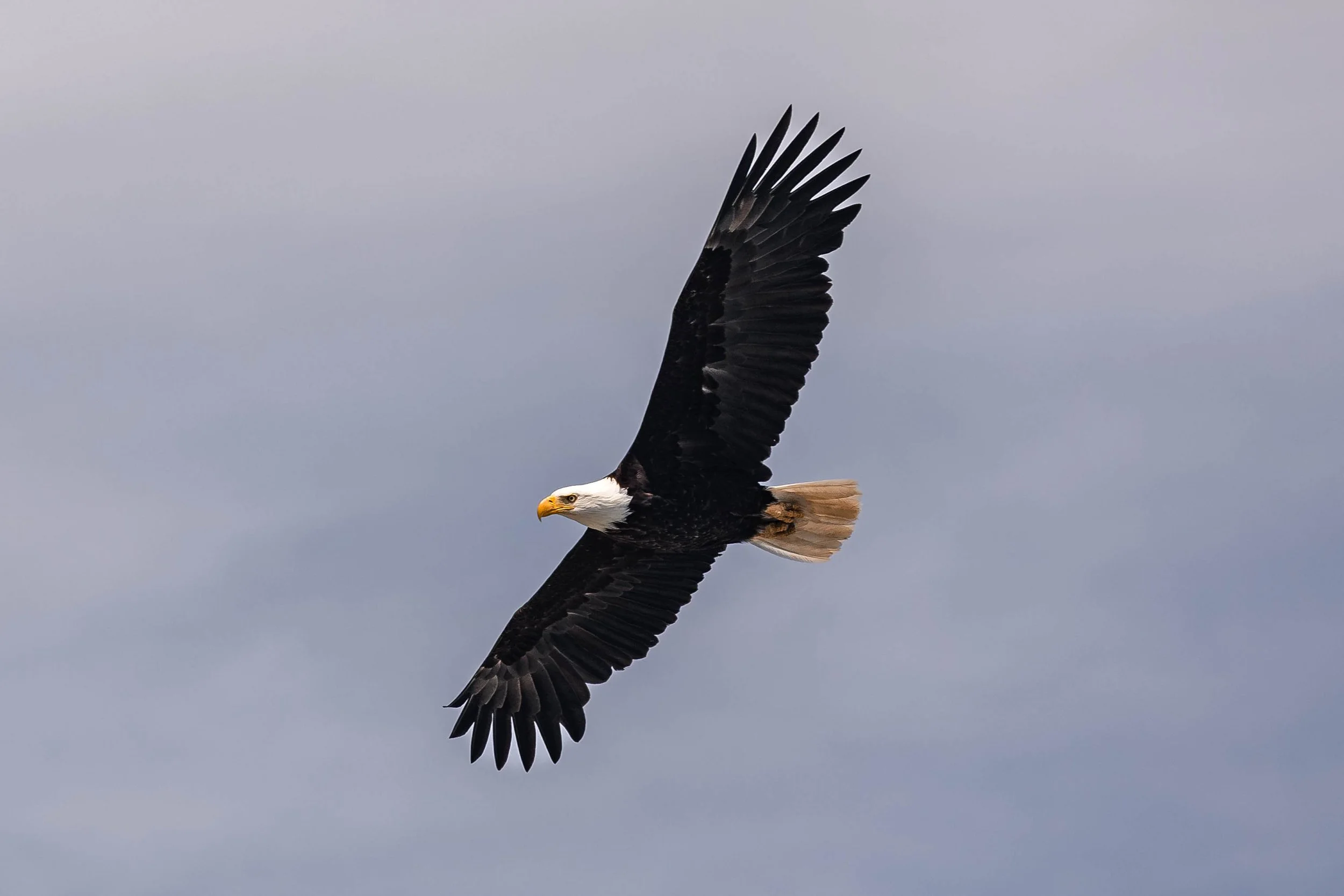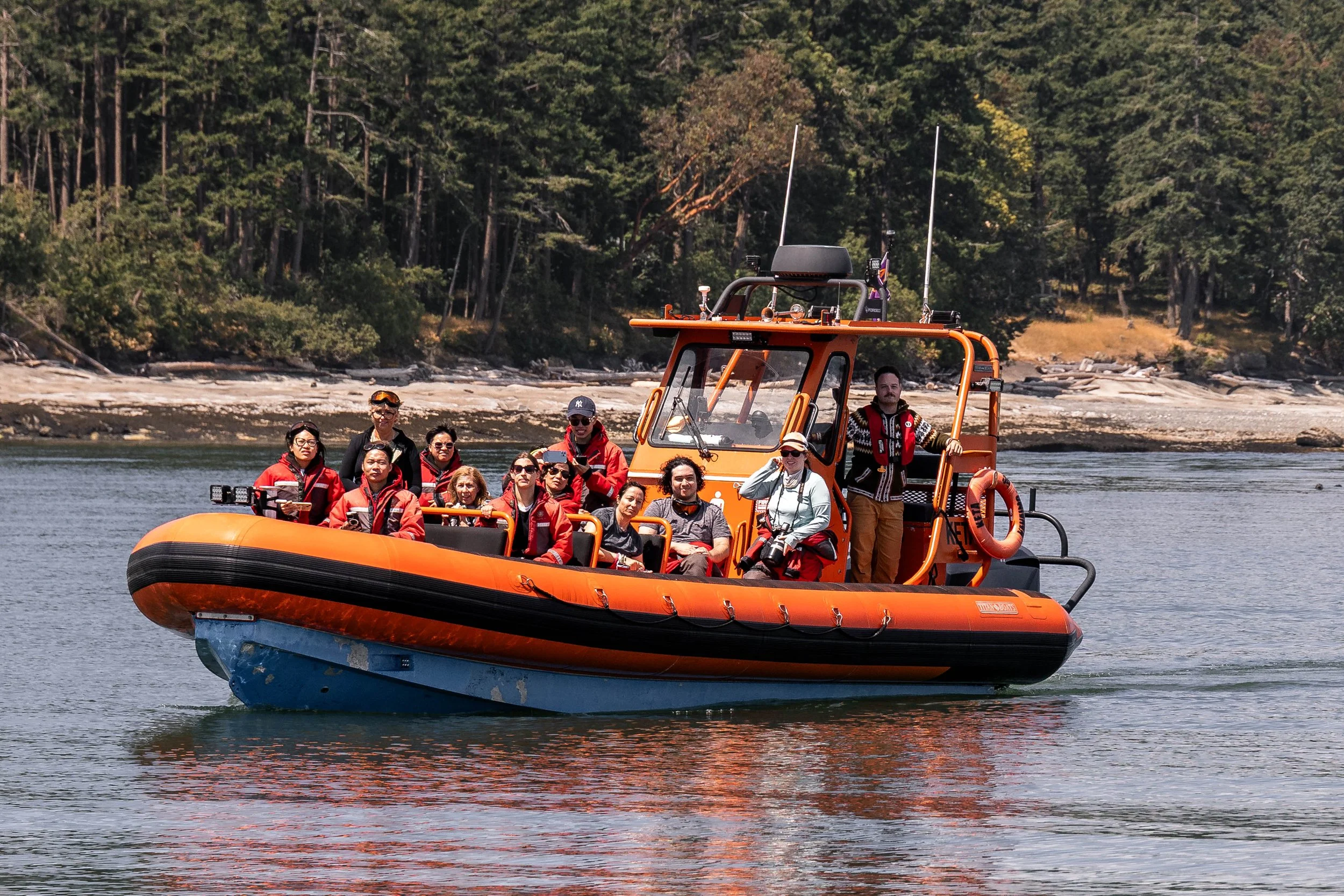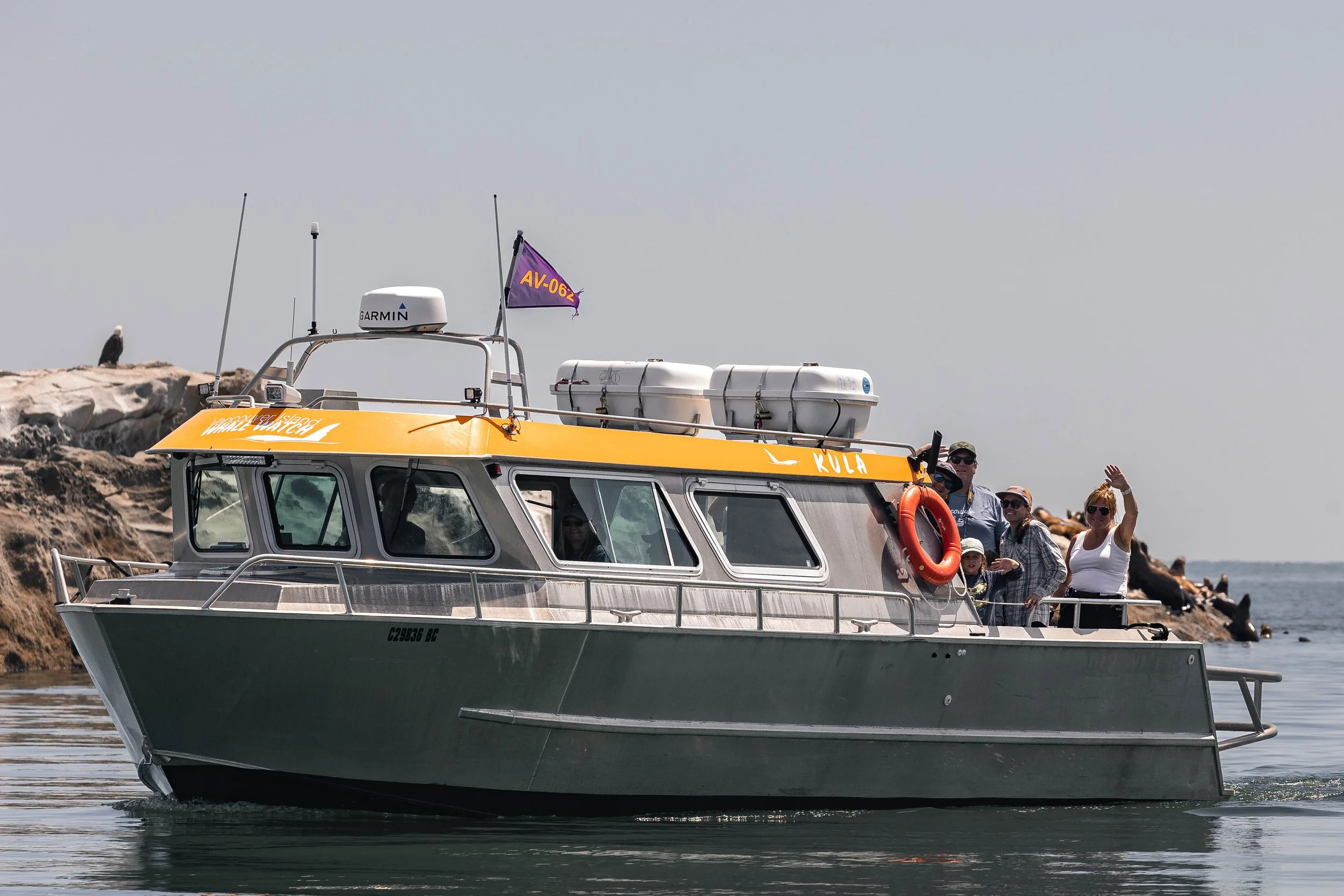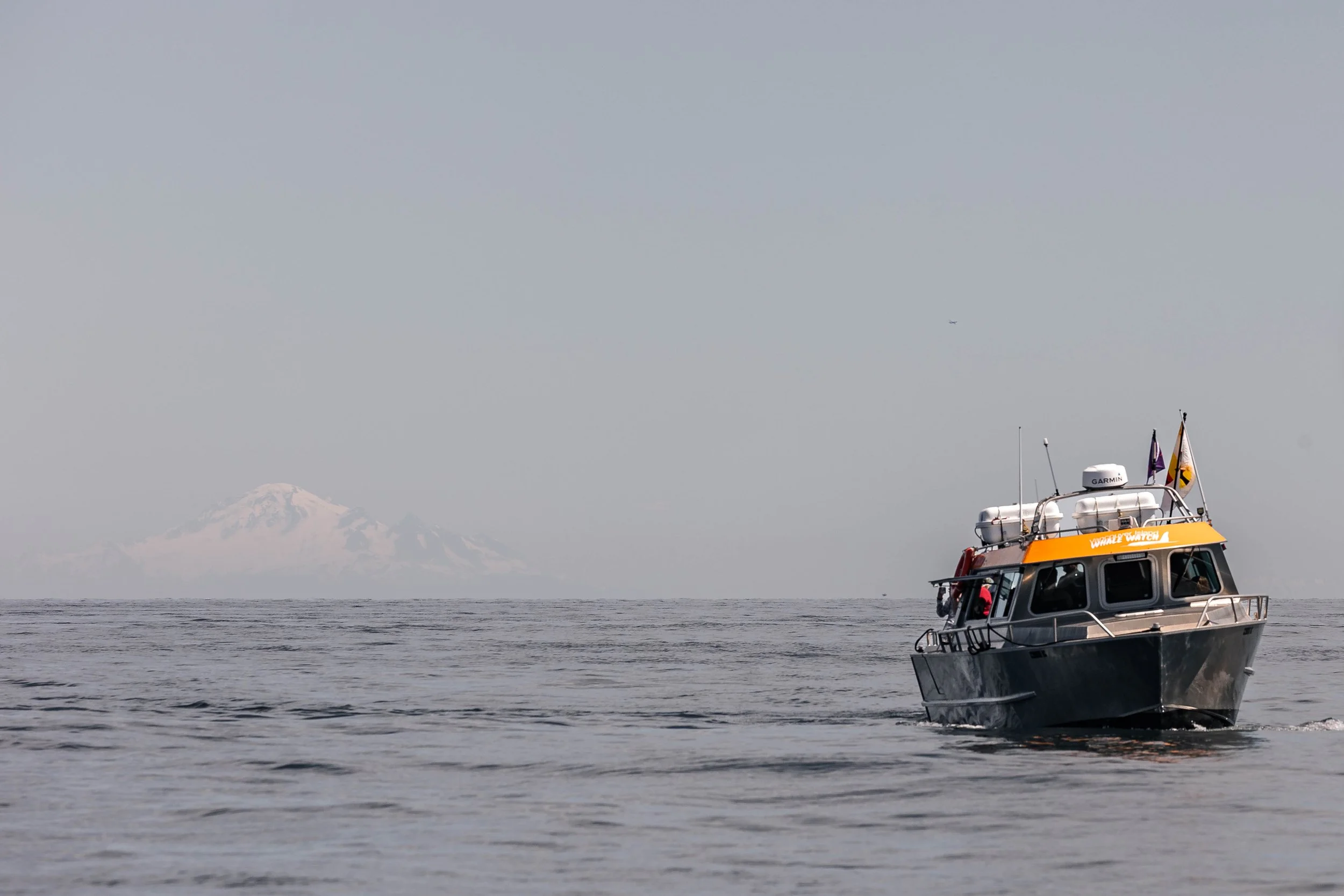July 7, 2025, 10:30 AM - Humpbacks in the Strait and an orca too!
We had the full fleet out on this bright, sunny day. With eyes peeled, we pushed off the dock to see what we could find! It wasn’t long before we spotted a tall black dorsal fin not too far from home. We recognized this orca almost immediately, before we even had time to pull out the long lenses! Which was lucky, because this orca was up to his usual antics, making him tricky to photograph. The elusive fin belonged to:
T049A2 Jude ♂ (2007)
Jude is a lone wolf of the orca world, and is 17 this year. Male orcas are truly mama’s boys in the most fascinating way. Unlike many other mammals, they remain with their mothers for their entire lives. They don’t leave to form their own family pods; instead, they stay tightly bonded to their maternal pod, where the mother often serves as the leader. This lifelong connection provides males with stability, guidance, and protection within the pod’s complex social structure.
But Jude is an exception to this rule. He branched off from his mother and has been travelling mostly solo for years. While many males remain with their mothers into adulthood, it’s not uncommon for them to start separating as they mature. This gradual independence can occur for a variety of reasons, one being the mammal-hunting lifestyle of the transient orca, which favours smaller, stealthier group sizes. For a large adult male, being less conspicuous is an advantage when stalking prey like seals or sea lions.
Some transient males adopt a more solitary or semi-nomadic lifestyle. These individuals may spend long stretches alone or loosely associate with different pods in a behaviour sometimes referred to as "pod hopping." While they remain socially connected and may occasionally reunite with family, they tend to roam more freely. This bachelor-style existence could be influenced by mating opportunities, resource availability, or simply personality. Just like humans, orcas show individual preferences in how social they want to be.
That said, even the most independent transient males often maintain lifelong bonds with their mothers and siblings, returning periodically to travel, rest, or socialize with them. The flexibility of transient orca social structure is part of what makes them so fascinating; they’re adaptable, intelligent, and capable of forming complex, ever-shifting networks that suit their needs in the wild. After leaving Jude to continue his anti-social travels, we got back into search mode!
Cascadia and Keta didn’t have to go far before spotting another species. A big, bushy blow revealed the presence of a humpback whale. We identified this individual as Anvil (BCZ0410). Like Jude, Anvil was travelling solo. For many years, humpback whales in the Salish Sea were thought to be largely solitary. Researchers and whale watchers typically observed them alone, which reinforced the belief that they preferred to travel and feed independently. It made sense, unlike orca with their tight-knit family pods, humpbacks didn’t seem to follow any clear social structure. But as sightings in the region have increased over the past few decades, so too has our understanding. That early assumption is now being challenged.
Today, we see humpbacks travelling together more frequently, sometimes in pairs or loosely formed groups. These associations can last for hours, days, or even weeks. In some cases, individual whales have formed repeated partnerships across multiple seasons, suggesting that certain social bonds may be stronger than previously realized. Whether these groupings form for cooperative feeding, mutual tolerance, or companionship is still being studied, but one thing is clear: humpbacks are far more socially complex than we once believed.
This shift in understanding underscores how much we still have to learn about these gentle giants. Their return to the Salish Sea is relatively recent, following decades of absence due to commercial whaling. As their population rebounds and they re-establish themselves in these waters, we're gaining a fuller picture of their behaviour—and it's proving to be more dynamic and social than the solitary image they once carried.
Kula, on a solitary mission of her own, came across another single humpback: Graphite (BCX2077), travelling through the Strait, likely in search of a meal. All three vessels eventually left their solitary humpbacks to continue on their way and resumed the search.
We were glad we did, as we finally found a pair of humpbacks, Graze (BCY0523) and her brand-new calf (BCY0523 2025 calf of Graze). Humpback whale calves are completely dependent on their mothers in the earliest months of life. Born in warm tropical breeding grounds, calves rely on their mothers for everything: nourishment, protection, and learning how to navigate the vast ocean. A newborn can drink up to 600 litres of rich milk per day, growing rapidly in preparation for the long journey north to their summer feeding grounds. Mothers stay close during this time, guiding their calves and teaching them essential survival skills.
This mother-calf bond typically lasts for about a year. Around 10 to 12 months of age, most calves begin to feed independently and gradually separate from their mothers. The process isn’t abrupt; it's a slow transition as the young whale gains confidence and experience. Once separated, juveniles begin exploring feeding areas, navigating migrations, and forging their own paths in the ocean.
What’s especially fascinating is that we’ve observed former calves reunite with their mothers years later. While these aren’t permanent reunions, they suggest that humpbacks are capable of long-term recognition and social memory. On occasion, mothers and their now fully grown offspring have been seen travelling or feeding together again, indicating that the bond formed in that first year is not easily forgotten. These encounters offer a rare and heartwarming glimpse into the emotional lives of humpbacks and remind us just how complex and intelligent these animals truly are. After admiring the new bundle of joy, we set off again to meet a few more familiar faces of the Salish Sea.
Out on the water, it’s not just the whales that make our tours so memorable; there’s a whole cast of coastal wildlife to enjoy. Some of our favourites include Steller sea lions, harbour seals, and bald eagles. Each species plays a vital role in the marine ecosystem and brings its own charm to the experience.
Steller Sea Lions are the largest sea lion species in the world. Adult males can weigh over 2,000 pounds and often gather in loud, rowdy groups on rocky outcroppings, barking and jostling for space. Despite their size, they are surprisingly agile underwater, capable of diving more than 800 feet in search of prey. Look for them lounging in the sun or swimming gracefully through kelp forests, they’re impressive creatures to behold.
Harbour seals, on the other hand, are much quieter and more solitary. These “puppy-eyed” pinnipeds are the most common marine mammal along our coast and are often seen hauled out on beaches, rocks, or even logs. Unlike sea lions, they lack external ear flaps and move on land by wriggling on their bellies. They're also remarkable divers, capable of staying submerged for up to 30 minutes while hunting fish and squid.
And soaring above it all is the iconic bald eagle. With wingspans of up to 8 feet, these majestic birds are expert hunters and opportunistic scavengers. While they mainly eat fish, they’re not above stealing food from other birds or preying on small mammals. Interestingly, bald eagles don’t develop their characteristic white head and tail until around five years of age, before that, they’re mostly brown and easily mistaken for other raptors.
Whether in the air, on the rocks, or swimming through kelp beds, these animals add so much richness to our tours. They’re a reminder that the Salish Sea is teeming with life, and there’s always more to discover beyond the whales.
Enjoy the photos below taken by Marine Natuarlists Cheyenne Brewster, Jordan Robinson and Val Watson.
Sneaky little T049A2 Jude. Photo by Cheyenne Brewster.
T049A2 Jude. Photo by Jordan Robinson.
Anvil’s dorsal fin. Photo by Jordan Robinson.
Anvil’s fluke. Photo by Jordan Robinson.
Anvil’s dorsal fin. Photo by Val Watson.
Anvil preparing for a dive. Photo by Val Watson.
Anvil’s fluke as she dives. Photo by Val Watson.
Graphite’s fluke. Photo by Jordan Robinson.
Graze’s dorsal fin. Photo by Val Watson.
Graze’s 2025 calf’s dorsal fin. Photo by Val Watson.
Graze (left) and her 2025 calf (right)! Photo by Val Watson.
Graze and her calf. Photo by Jordan Robinson.
Graze cruising along. Photo by Cheyenne Brewster.
Graze’s 2025 calf! Photo by Cheyenne Brewster.
What a chunky and majestic Steller Sea Lion! Photo by Jordan Robinson.
These two were nose-to-nose! Photo by Jordan Robinson.
Fighting at the top of Stinky Rocks. Photo by Jordan Robinson.
Zooming through the water. Photo by Val Watson.
Waking up from a long nap. Photo by Val Watson.
We don’t think he liked the water on his toes! Photo by Val Watson.
Snoozing in the sunshine. Photo by Val Watson.
A little rotund Harbour Seal. hoto by Val Watson.
The most photogenic of seals, sunbathing away! Photo by Val Watson.
A Bald Eagle soaring by. Photo by Cheyenne Brewster.
A Bald Eagle perched on Stinky Rocks. Photo by Cheyenne Brewster.
Looking for a snack. Photo by Cheyenne Brewster.
Our open vessel Keta. Photo by Jordan Robinson.
Our semi-covered vessel Kula enjoying the sunshine. Photo by Cheyenne Brewster.
Kula with Mt.Baker in the background. Photo by Cheyenne Brewster.


